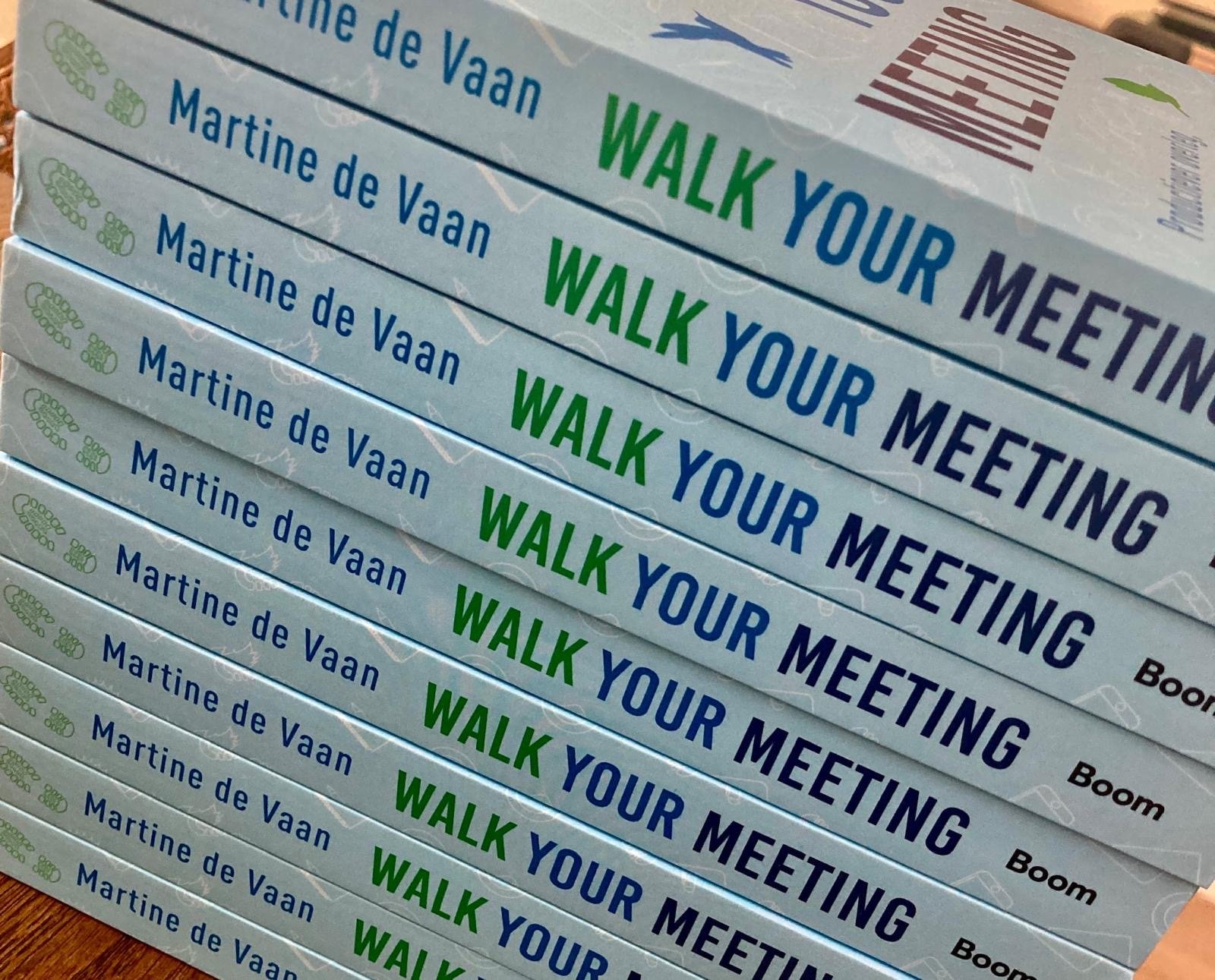Weeting: walk your meeting!
We’ve met Martine de Vaan long time ago, and work together since the very first Outdoor Office Day. She was developing a variety of workforms for productive walking meetings and christianed them ‘weetings’. In 2021 she published her book in the Netherlands: Walk Your Meeting. The passage below is from her book.
“Imagine being outside and walking plenty every day, even during the week, and while working. Being outside and walking is no longer limited to the weekend or lunch breaks, it is part of every day. Because it doesn’t take any time or discipline, you finally manage to get your steps throughout the day. From now on, you do weetings!
Walking meetings increase your creativity and you get better contact with the people you work with. It is easier to discuss difficult issues, walking together. As a result, problems are solved faster, before they get out of hand. If you are stuck in your thinking just walk around, and you usually come up with an idea. After a vacation, you don’t have to resent the idea you will be sitting inside all day, because you’re not going to do that at all. And there is more! Because you’re outside more often and longer, you follow the seasons. You feel the wind, the sun on your skin, and sometimes rain. You hear the sounds of the animals, people and machines around you. Whether you smell blossoms, an eatery, or traffic, your senses are on. It seems like you are more alive.
I too struggled with the problem of sitting inside all day. I loved my job, but at the same time hated spending five days a week in offices and conference rooms. That’s over. Walking has become an integral part of my arsenal of work methods for years. Outside is part of the work environment, I feel fitter, and the city, the environment, feels more like “mine”. It may sound like a fairy tale, but it’s not. It can be done: working more productively, exercising more and being outside more often without it taking up any time. Enter weeting!
”
The english version of Walk Your Meeting is forthcoming. We dare not say when, but when your are interested, let us know!
WEETING - the essentials
You probably figured it out already, but weeting stands for walking meeting, or meeting with a w. It's a new form of an outdoor meeting. You plan a weeting in order to discuss, learn or decide on something. A weeting is usually done in small groups, of two or three people. But in certain places - like a university campus or park with spacious footpaths - weetings with four or five participants are possible. When being outdoors with larger groups, you can split the participants in smaller groups and partial, and combine them with plenary standing or sitting sessions with the whole group.
Weeting is suitable for any person who likes to organize a meeting outdoors in the urban nature. Whether you are a professional, manager, employee, consultant, self-employed worker or teacher. Weeting helps people to get better results and it gives you energy.
Weeting routes for walking meetings
An important tool for any weeting are the weeting routes. These are routes especially designed for walking meetings. They preferably have landmarks along the way; these landmarks help with the orientation and can be used to structure the meeting. Weeting routes can be as short as 500 meter and as long as 6 km (of longer). The walking distance depends on the available time participants have. For example, for a 60 minutes long meeting we advise a walking route of maximum 3.3 km to 3.7 km. This does depend on the type of outdoor location it’s going to be used. Routes without traffic lights can for example be a bit longer. From our experice, the most used routes are around 1,8 km for meetings of half an hour.
When developing such a weeting route a couple of rules should be followed. A weeting route is always easy to follow and uses quiet streets or paths; also the route can easily be shortened or extended. The routes and landmarks can be used in different ways: be creative and choose what you like best and is fitting for the occasion.
Weetingpoint = meetingpoint
A weetingpoint is the starting point of a weeting, a meetingpoint with a w. It can be the hall of an office, a train station, but also a café or the entrance of a park. Some offices have a weeting point marked in the hall, with a sign on the floor and/or a map on the wall showing the possible routes in the neighbourhood.
Weeting formats: increase the effectivity
Weeting formats are structures for weetings to shape the meeting. We defined seven basic formats, which can be used for most meetings. In addition, there are also specific, elaborate formats, suitable for most meeting types that occur in an organization. Weeting is also suitable for education, and a weeting can even be done alone, by phone, and online with large groups at a time.
Not a lunchwalk
Although you can plan a weeting at any time during your workday, so also around lunchtime, a weeting is NOT a lunch walk or break. Of course we are hoping you do have breaks and take time to have lunch. But weeting is not meant to replace breaks. The essence of weeting is that you use walking for meeting, learning, working or thinking.
Feel free to go for freestyle
If you are not a fan of stricter formats, or if you have a meeting that should evolve more organicly, than go for freestyle: you can - but don’t have to :) - use the landmarks along the route purely for orientation and in order to keep an eye on the time you planned for this weeting. We consider freestyle to be a weeting format as well :).
All claims are true and more!














